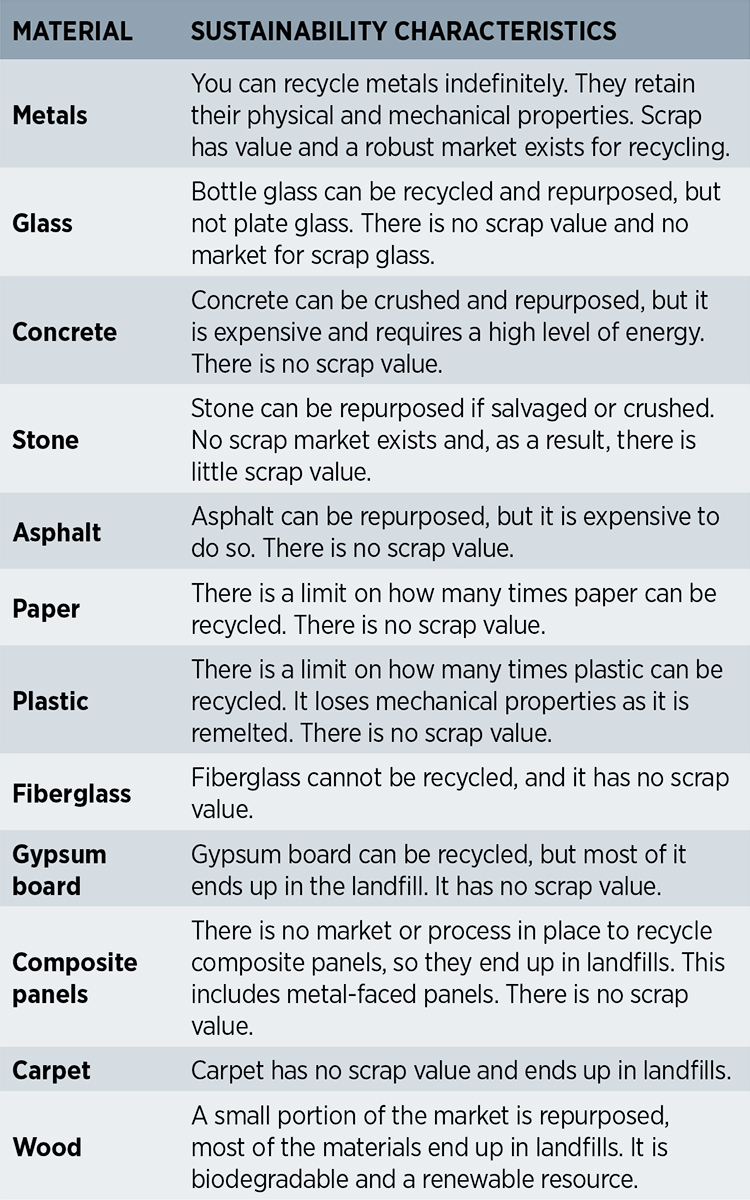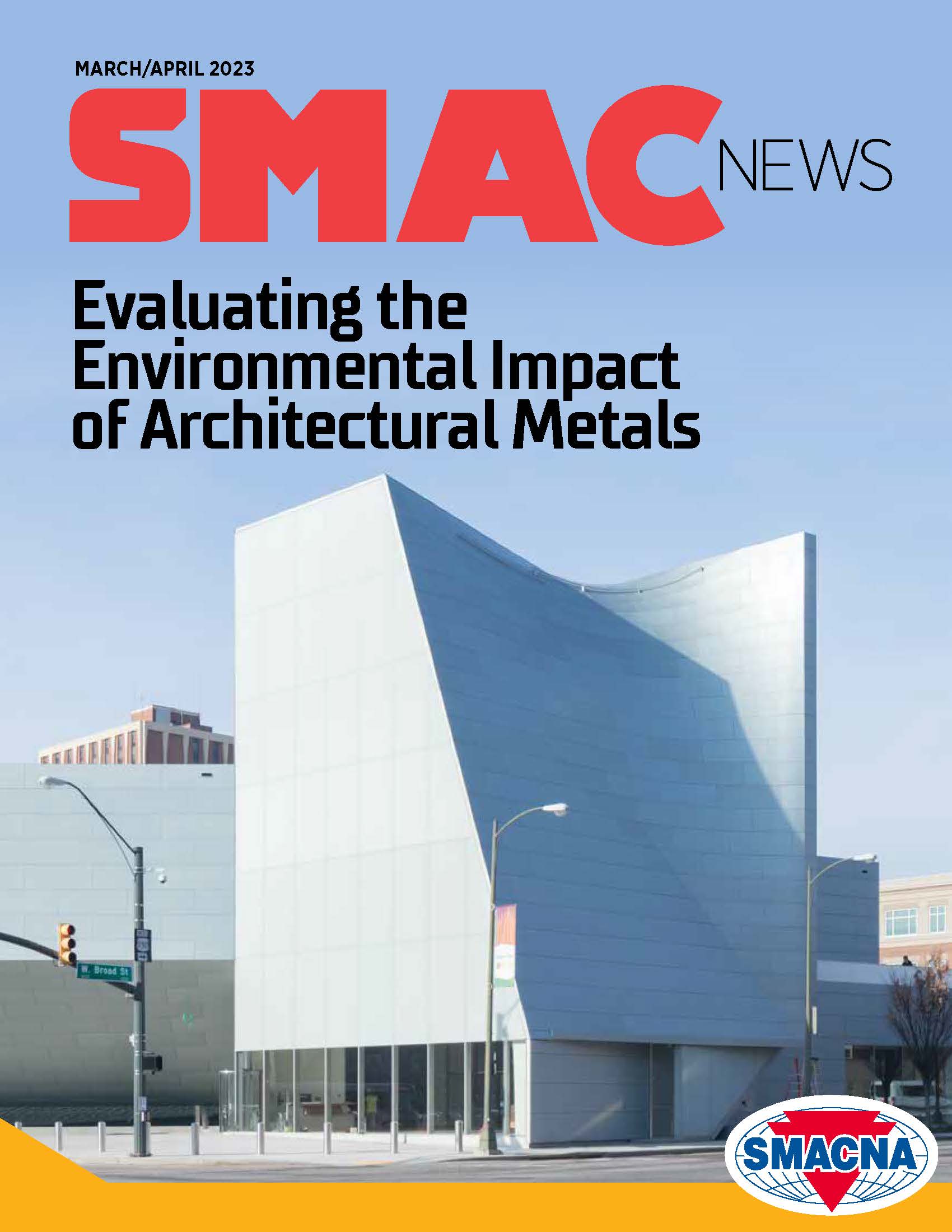Exploring metal’s role in sustainable architecture
Metals are different from nearly all other materials used in our built environment. Once the useful life has ended, the metal is collected and recycled.
 Metals are different from nearly all other materials used in our built environment. Once the useful life has ended, the metal is collected and recycled. During the recycling, the metal is remelted and reshaped, gaining back all of its original mechanical properties. Essentially, the metal is reborn to take on a new form and purpose.
Metals are different from nearly all other materials used in our built environment. Once the useful life has ended, the metal is collected and recycled. During the recycling, the metal is remelted and reshaped, gaining back all of its original mechanical properties. Essentially, the metal is reborn to take on a new form and purpose.
Metals are the only material used in constructing our world that can be used over and over again — forever.
Let’s look at the five most common metals used in architecture today and their sustainability advantages.
Aluminum
The collection, shredding and melting of aluminum returns more than 65 percent of this metal back into the marketplace each year.
Aluminum recycling is an extremely important aspect of metal production as well. It effectively keeps costs down and reduces harm to the environment.
In the United States, 80 percent of the aluminum produced is from recycling.
Copper
More than ever, copper is in high demand. The metal is corrosion-resistant and conducts heat and electricity efficiently, making it highly desirable for the explosion of technological applications in today’s world.
Copper has demonstrated health-related benefits as well. In the last several decades, there has been substantial testing on the efficacy of various surfaces and wipes to eliminate harmful bacteria. Copper and copper alloys have performed extremely well.
Stainless Steel
Stainless steel alloys are considered hygienic and are acceptable for drinking water, food preparation, dairy operations and medical devices including implants. It is used in hospitals, clean rooms, restaurants, bathrooms and more.
Stainless steel doesn’t promote bacterial growth, nor does it provide a surface for bacteria to collect and flourish. Most stainless steel surfaces are as easy to clean as glass or ceramic surfaces.
Recycling of stainless steel has grown dramatically and has become the main raw source of the metal. The International Stainless Steel Forum states that objects today made of stainless steel have an average recycling content of approximately 60 percent.
Steel
In the built world, iron is ubiquitous. It offers longevity and can be melted and reused indefinitely. The recycling of iron and steel is well-established across the globe.
Specialized mills with electric arc furnaces have helped increase the demand for recycling, as well as reduced the energy consumption of steel production. The energy required to recycle scrap is approximately a third of the energy required from the ore production route.
Zinc
Today, using zinc as a steel coating in the process known as galvanizing is considered an environmental and sustainable coating process. There are no VOCs (volatile organic compounds) released during the process. Furthermore, it results in a steel product that will last longer and have far less maintenance when properly done as compared to paint coatings. The initial cost of galvanizing is very low as well.
On top of this, steel and zinc can be recovered and recycled. Recycling of existing zinc currently stands at about 30 percent. It is expected to increase as new systems of recovery bring the cost of recycling down. Recycling zinc from sheet, scrap zinc and stamped zinc is relatively straightforward. As the steel is heated, the zinc melts and vaporizes. From the vapors, the zinc is removed and repurposed. Another method is clearing the zinc by leaching the metal with acid and electrowinning it to recover it from the acid bath.
Published: May 16, 2023
IN THIS ISSUE
Big Clients Require Big Partners
JPMorgan Chase & Co.’s global headquarters becomes AABCO’s next commercial HVAC client in NYC.
Bringing Shade to Schools
Intech helps install sheet metal shade structures at California schools.
Evaluating the Environmental Impact of Architectural Metals
Zahner talks about how the Life Cycle Assessment accounts for the environmental impact of metal material from its initial extraction through manufacture and use and on to the end of its designed useful life.
Exploring metal’s role in sustainable architecture
Metals are different from nearly all other materials used in our built environment. Once the useful life has ended, the metal is collected and recycled.
Going to Market
With advertising, 128-year-old Welsch Heating & Cooling Co. isn’t afraid to try new ways to reach their customers — as long as they work.
How to Prepare Your Business for Cyberattacks
Bulletproofing your business against a cyberattack can help protect you from today’s threats.
Metal is a Low Waste, Sustainable Building Material
Sustainability is more than just an industry buzzword at Zahner. It's a daily commitment to preserving and protecting the natural resources we’ve been entrusted with and using them responsibly in the built environment.
Sheet Metal Werks Shifts Field Hours to Shop Hours
The Illinois company saved significant man-hours by planning ahead.
SMACNA at the White House & SMACNA Endorses Bipartisan Bill on Substance Abuse
SMACNA was asked to be part of a policy roundtable on supply chain for highly efficient heat pumps and related decarbonization technologies that are key parts of whole house retrofits.
SMACNA Government & Technical Updates & Engagement Opportunities
The first quarter is always busy at SMACNA. We have lots of association events, our technical department is out in force, labor is starting its bargaining season and the government relations team is focused on many regulatory issues.
The Challenges With Manning Megaprojects
With the pandemic entering a new phase, construction has boomed with what are now widely known as “megaprojects.” Every day, it feels like there’s a new stadium, microprocessor factory or some other massive project getting underway. The demand for
Top Contractor Strategies for 2023, Part 2
In the last issue of SMACNews, I presented the first five of Grassi’s Top 10 Contractor Strategies for 2023. Those approaches to purchasing, procurement, prequalification, increased costs and project management are designed to cut through the noise
Understanding The Notice Requirements In Your CBA
For contractors with collective bargaining agreements (CBAs) expiring in 2023, it is important to remember that most CBAs, including the Standard Form, include an “evergreen” or “automatic renewal” clause.


